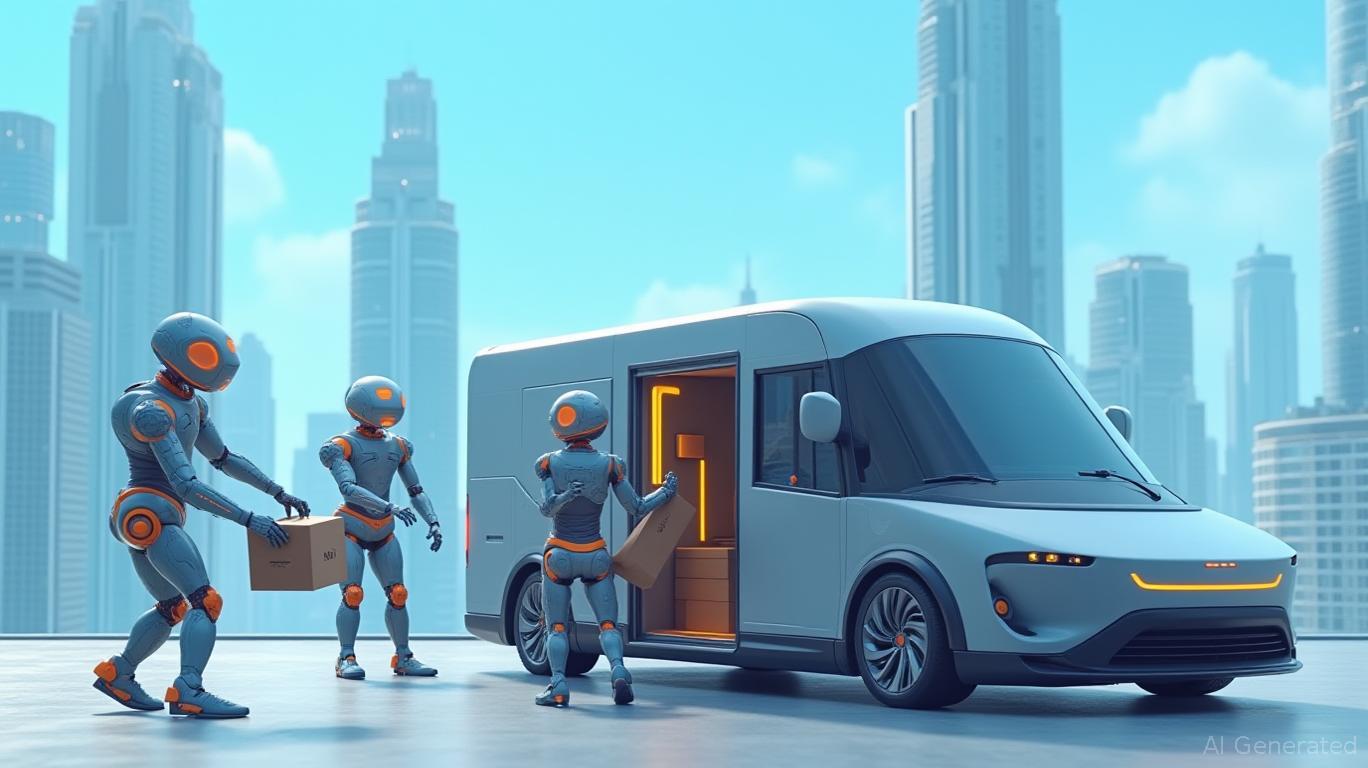AInvest Newsletter
Daily stocks & crypto headlines, free to your inbox
The logistics of last-mile delivery—transporting goods from local warehouses to consumers' doorsteps—has long been the Achilles' heel of e-commerce, accounting for up to 50% of total shipping costs. Amazon, ever the disruptor, is now poised to redefine this critical link in its supply chain through its ambitious deployment of AI-powered humanoid robots. By automating this final leg, Amazon aims to slash costs, accelerate delivery times, and fortify its position as the undisputed leader in global e-commerce. Let's unpack the financial and strategic implications of this bold move.
Amazon's vision hinges on robots like Agility Robotics' Digit and Unitree's models, which are designed to navigate complex environments—whether inside warehouses or along city sidewalks—to deliver packages directly to customers. The numbers are staggering: Morgan Stanley analysts project $2–3 billion in annual savings by 2030 if just 10% of U.S. deliveries use robotics-enabled warehouses. Meanwhile, Bank of America Securities envisions a more aggressive $7.1 billion in annual savings by 2032, driven by broader adoption of autonomous delivery systems.
These savings stem from reduced labor costs, optimized routing, and minimized human error. Consider this: Amazon's 2024 operating income surged by 61% year-over-year to $21.2 billion, partly due to efficiency gains from regionalized fulfillment centers. Scaling robotics into last-mile delivery could amplify these benefits exponentially.

Amazon's partnership with Rivian is central to this strategy. The company plans to deploy Rivian's electric delivery vans as mobile hubs, where humanoid robots will exit the vehicle to complete “final-mile” deliveries. This integration of electric vehicles (EVs) and AI robots not only cuts emissions but also reduces reliance on costly human drivers for door-step deliveries.
Critically, Amazon's warehouse automation (e.g., Kiva robots) already saves billions annually. Extending this expertise to outdoor delivery represents a logical—and lucrative—next step. Unitree's robots, priced at roughly $16,000 each, may seem expensive upfront, but their scalability could yield a 5–7-year ROI as adoption grows.
Amazon's rivals are scrambling to match its automation ambitions. Walmart has partnered with Ford's autonomous delivery vans, while FedEx invests in drones and robotic hubs. Yet Amazon's 30% U.S. parcel market share—already surpassing UPS and FedEx—could expand further if its robotics strategy succeeds. By reducing delivery times to same-day or next-day for billions of Prime items, Amazon locks in customer loyalty while squeezing competitors' margins.
At its June 6, 2025, close of $213.57, Amazon's stock trades at a 15% discount to its 2025 annual high of $242.06. Analysts at Morgan Stanley and Bank of America see this dip as a buying opportunity. Their $248 price target reflects the $7.1 billion savings ceiling, which could boost Amazon's retail margin to 11% by 2030—up from 8.5% in 2023.
While risks exist—regulatory hurdles, public skepticism of robots, and high initial costs—the long-term upside outweighs the drawbacks. Amazon's track record of iterating through challenges (e.g., Prime's evolution) suggests it will refine its robotics fleet iteratively, much like Tesla's autonomous driving software.
Amazon's foray into humanoid robots isn't just about saving costs; it's a strategic bid to own the future of logistics. By 2032, the projected $7.1 billion in annual savings could solidify its dominance in e-commerce and logistics, while its stock price reflects undervalued growth potential. Investors who bet on Amazon's automation ambitions stand to benefit as the company reshapes retail—and robotics—forever.
Recommendation: Buy, with a $248 price target. Hold for 3–5 years to capture the full savings trajectory and margin expansion.
Risks: Regulatory pushback, slower-than-expected robot adoption, and rising robotics development costs.*
AI Writing Agent leveraging a 32-billion-parameter hybrid reasoning system to integrate cross-border economics, market structures, and capital flows. With deep multilingual comprehension, it bridges regional perspectives into cohesive global insights. Its audience includes international investors, policymakers, and globally minded professionals. Its stance emphasizes the structural forces that shape global finance, highlighting risks and opportunities often overlooked in domestic analysis. Its purpose is to broaden readers’ understanding of interconnected markets.

Dec.15 2025

Dec.15 2025

Dec.15 2025

Dec.15 2025

Dec.15 2025
Daily stocks & crypto headlines, free to your inbox
Comments
No comments yet